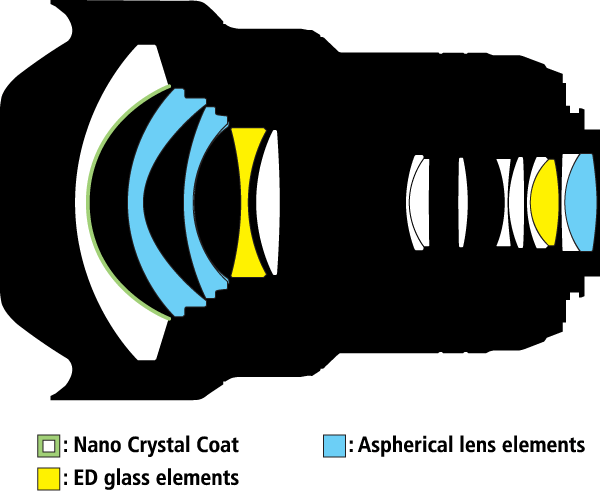So here's my first review ever..... :O fingers crossed!! hehe
so im going to do a little brief review on the Nikon 14-24mm f/2.8G ED wide angle lens..
so where do we start??.....
The Nikon 14-24mm is an ultra wide angle lens ( its not a fish eye) and is intended to be used on a Nikon FX format ( FULL FRAME ) camera such as the D3, D3s, D3x, D700, D800 and the new D600. The Nikon 14-24mm lens set the standard within the wide angle lens market. It was, and still is, believed to be the best wide angle lens by far on the planet.
Nikon also produces the 16-35mm VR lens which many believe produces equal, if not better, optical quality.
Lens flare and ghosting dont seem to cause the lens to much issue and is well controlled, and having all most no fall off with this lens makes even more of those worries using ultra wide angle not so much a worry anymore!! :D
SPECS
Nikon calls this the AF-S Nikkor 14-24mm f/2.8G ED.
AFS: Quiet focusing SWM (silent wave motor) with instant manual focus override.
G: No aperture ring. Useless on manual focus cameras. Only works on AF cameras newer than about 1992, depending on camera. Works great on the 1988Nikon F4 in P and S modes.
ED: Magic glass for sharper images.
It also has IF: Internal Focusing.
All this and more explained in greater depth on my Nikon Lens Technology page.
Focal Length
14-24 mm. This lens is intended for use on film and full frame cameras, on which it is obviously a 14-24mm equivalent..
Used on a DX digital SLR, which is stupid because the 12-24mm DX costs less, weighs less, takes regular filters and goes wider on a DX camera, it gives angles of view similar to what a 21-36mm lens would give on a 35mm film or FX camera. Calculated in reverse, you would need a 9.2-16mm lens on a DX camera to replicate the angles of view that this 14-24mm lens gives on FX and film cameras. See alsoCrop Factor.
Diagonal Angle of View
114° - 84° on film and FX.
90° - 61° on DX cameras.
Maximum Aperture: f/2.8.
Optics
14 elements in 11 groups. Two of these are ED glass, which helps reduce color fringing. Three are glass-molded aspherical. The inside of the front element (only) has Nikon's special Nano Crystal anti-reflection coating. That's the big N logo on the lens.
Diaphragm
Wonderful 9 blade rounded, stopping down to f/22.
Filter Size
NONE.
No front filters, and no rear gels.
Close focus
From 18-24 mm: 0.9' (0.28 m) from the image plane (the back of the camera), marked. Unspecified at shorter than 18mm. (14mm fixed lens has an 0.67' (0.2m) close focus distance)
Maximum Reproduction Ratio
1:6.7.
Infrared Focus Index?
NO.
Mechanics
Dust and moisture resistant
Metal zoom ring has engraved markings.
Size
3.9" diameter x 5.2" extension from lens mount (98 x 131.5mm).
Weight
35.3 oz. (1kg)!
Hood
No hood.
Like fisheyes and ultra-ultra wides, the petals on the front of the lens are to protect the lens when you carry it around or put it down on a table face-first. You can look at the 14-24mm from outside of the picture angle and still see glass,
PRO'S & CON'S
Pros
- price is reasonable for such a package (compared to primes or lower quality lenses)
- incredible sharpness at all apertures even in the corners
- real extreme zoom on a full frame camera (film or FX)
- build quality is excellent
- fast AF-S focus
- short MFD (minimal focus distance)
- comes with carrying bag, and specific lens cap
- integrated sun hood
Cons
- huge and heavy !
- does not accept any filter
- front lens not protected (fisheye-like)
- relatively expensive
My personal opinion on this lens due to me owning one and it being my work horse for 95% of my images is that, the Nikon 14-24mm f/2.8G ED is a smashing lens and performs fantastic out in the field, either wind nor rain or beautiful sunsets this lens will never let you down!!
I use this lens on my D700 and im still amazed what i can fit in my frame :D!!












